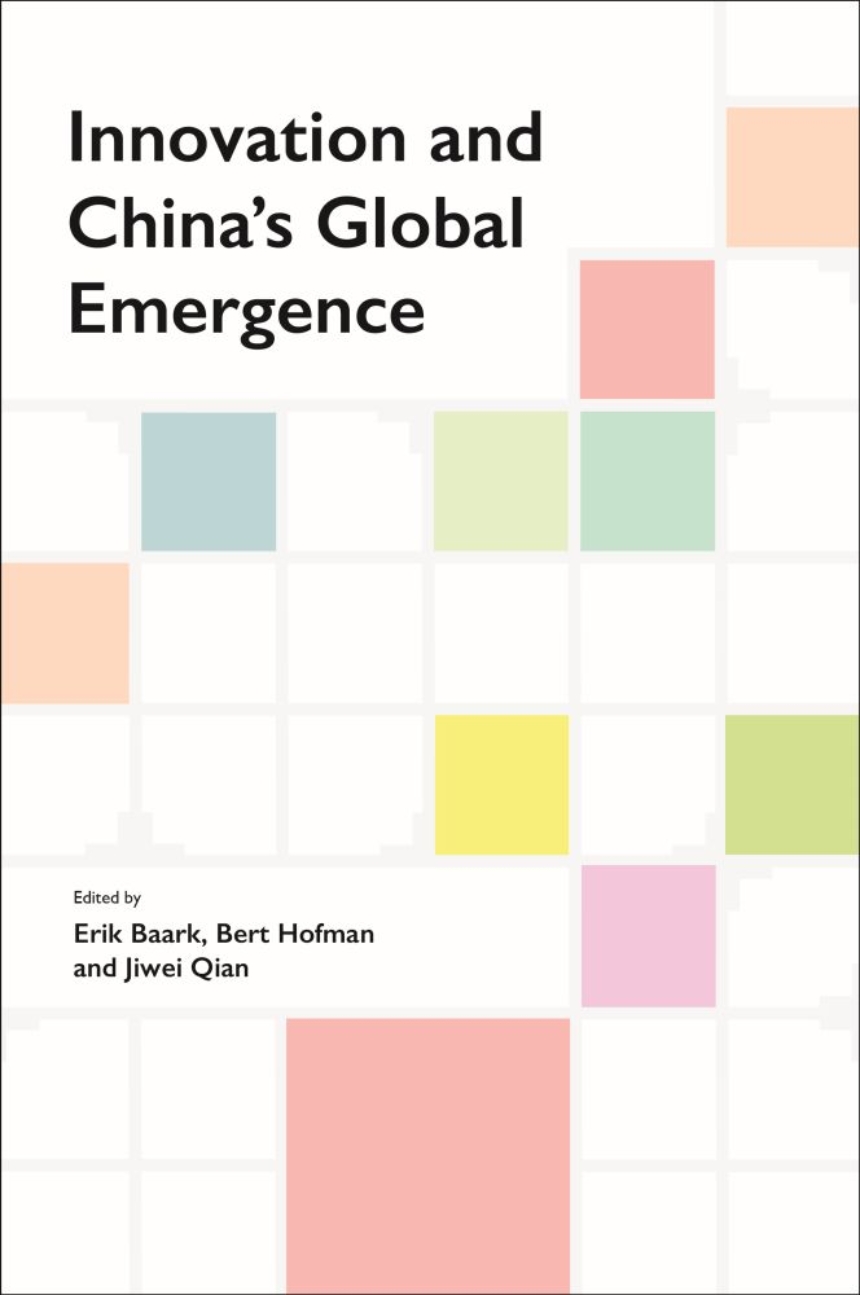Distributed for National University of Singapore Press
Innovation and China’s Global Emergence
A pressing investigation into the global implications of China’s shift to an innovation economy.
As China shifts to an economy driven by innovation and productivity growth, the global implications of this transition will be significant. Amid the rise of techno-nationalism and a changing strategic calculus around the world, the manner and means of China’s transition faces a high degree of scrutiny. China is attempting to balance a reliance on overseas sources of technology alongside efforts to strengthen domestic innovation capabilities as a hedge against the risks of a United States-led “decoupling.”
In these circumstances, it is essential to understand the many different forces of change within China, and the way China responds to outside changes. The evolution of China's innovation economy will be one of the key economic stories of the early twenty-first century, and the world will need China as a source of innovation in the decades ahead. The aim of this book is to help build a better framework for policymakers to find a new equilibrium in negotiating the terms of an oncoming shift in geopolitics.
As China shifts to an economy driven by innovation and productivity growth, the global implications of this transition will be significant. Amid the rise of techno-nationalism and a changing strategic calculus around the world, the manner and means of China’s transition faces a high degree of scrutiny. China is attempting to balance a reliance on overseas sources of technology alongside efforts to strengthen domestic innovation capabilities as a hedge against the risks of a United States-led “decoupling.”
In these circumstances, it is essential to understand the many different forces of change within China, and the way China responds to outside changes. The evolution of China's innovation economy will be one of the key economic stories of the early twenty-first century, and the world will need China as a source of innovation in the decades ahead. The aim of this book is to help build a better framework for policymakers to find a new equilibrium in negotiating the terms of an oncoming shift in geopolitics.
328 pages | 20 figures, 21 tables | 6 x 9 | © 2021
Asian Studies: East Asia
Economics and Business: Economics--International and Comparative
Reviews
Table of Contents
1. Introduction: Innovation and China’s Global Emergence
Bert Hofman, Erik Baark and Jiwei Qian
Part One: Implications of China’s Innovation Emergence
2. China and the U.S, Technology: Conflict or Cooperation?
Gary H. Jefferson
3. The US-China Trade War and Myths about Intellectual Property and Innovation in China
Dan Prud’homme
4. Global Implications of China’s Policies on Indigenous Innovation
Erik Baark
5. China’s Talent Challenges Revisited
Cong Cao and Denis Fred Simon
6. China’s International S&T Relations: From Self-Reliance to Active Global Engagement
Denis Fred Simon
7. How Does International Collaboration Lead to Radical Innovation in Latecomer Firms?
Xiaolan Fu, Cintia Külzer-Sacilotto, Haibo Lin and Hongru Xiong
Part Two: Industrial Policy Challenges
8. PRC Industrial Policies Postdate Rather than Lead Economic Activity
Carsten Holz
9. Made in China 2025 and the Proliferation of Intangible Assets
Anton Malkin
10. Industrial Policy and Competitive Advantage: A Comparative Study of the Cloud Computing Industry in Hangzhou and Shenzhen
Bai Gao and Yi Ru
11. Global Value Chains and the Innovation of the Chinese Mobile Phone Industry
Yuqing Xing
List of Contributors
Index
Bert Hofman, Erik Baark and Jiwei Qian
Part One: Implications of China’s Innovation Emergence
2. China and the U.S, Technology: Conflict or Cooperation?
Gary H. Jefferson
3. The US-China Trade War and Myths about Intellectual Property and Innovation in China
Dan Prud’homme
4. Global Implications of China’s Policies on Indigenous Innovation
Erik Baark
5. China’s Talent Challenges Revisited
Cong Cao and Denis Fred Simon
6. China’s International S&T Relations: From Self-Reliance to Active Global Engagement
Denis Fred Simon
7. How Does International Collaboration Lead to Radical Innovation in Latecomer Firms?
Xiaolan Fu, Cintia Külzer-Sacilotto, Haibo Lin and Hongru Xiong
Part Two: Industrial Policy Challenges
8. PRC Industrial Policies Postdate Rather than Lead Economic Activity
Carsten Holz
9. Made in China 2025 and the Proliferation of Intangible Assets
Anton Malkin
10. Industrial Policy and Competitive Advantage: A Comparative Study of the Cloud Computing Industry in Hangzhou and Shenzhen
Bai Gao and Yi Ru
11. Global Value Chains and the Innovation of the Chinese Mobile Phone Industry
Yuqing Xing
List of Contributors
Index

